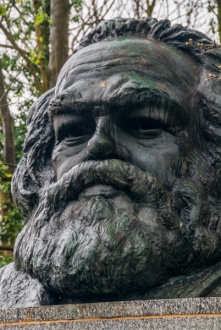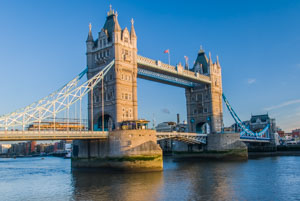
East and West Cemeteries
There are two cemeteries, east and west, facing each other across Swain's Lane. The west cemetery was founded in 1839 after burial grounds in inner London became too crowded to support the expanding population.
This older cemetery is a wonderful period piece, full of fascinating, and sometimes peculiar, funerary monuments, buildings, chapels, and memorials, representing a marvellous example of Victorian attitudes towards life, death, and dying.
The east cemetery was added in 1854, and the west cemetery was closed to burials in 1966. Restoration work has created a landscape garden from the overgrown ruins of the Victorian cemetery, and this has been listed as of Grade II importance by English Heritage. There are two Grade I listed buildings among the cemetery's collection of funerary architecture.
Famous People
A majority of those buried at Highgate are listed in the Dictionary of National Biography; among these are 6 Lord Mayors of London, and other well-known people such as author George Eliot and Sir Ralph Richardson.
The most intriguing area of the west cemetery is the Circle of Lebanon, a sunken avenue of funerary vaults set into a circular shape. There is also an avenue of Egyptian styled vaults, the Terrace Catacombs and a fabulous mausoleum built by businessman Julius Beer.
The east cemetery is open daily for casual visitors. The west cemetery, by contrast, can only be visited as part of a guided tour led by volunteer guides. Full details of tours are on the Highgate Cemetery website.


Note:
I've taken one of the guided tours and found it one of the best tours I have ever had the pleasure of enjoying. I learned so much about the Victorian world and its obsession with death and mourning, and the guide was able to make the stories of the people who lie buried in the cemetery really come to life in a fascinating way. I can highly recommend the tours.









 We've 'tagged' this attraction information to help you find related historic attractions and learn more about major time periods mentioned.
We've 'tagged' this attraction information to help you find related historic attractions and learn more about major time periods mentioned.



